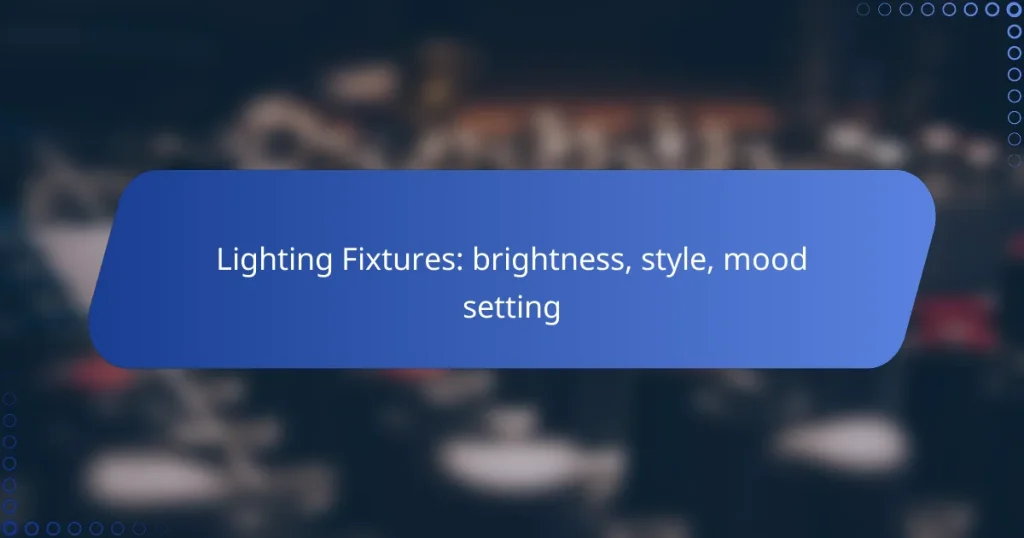Choosing the right lighting fixtures is essential for achieving the desired brightness, style, and mood in your space. Consider factors like lumen output and energy efficiency, particularly with LED options, while ensuring the fixtures align with your interior design preferences. From modern minimalist to vintage industrial styles, the right lighting can significantly enhance the ambiance, creating warmth or energy as needed.
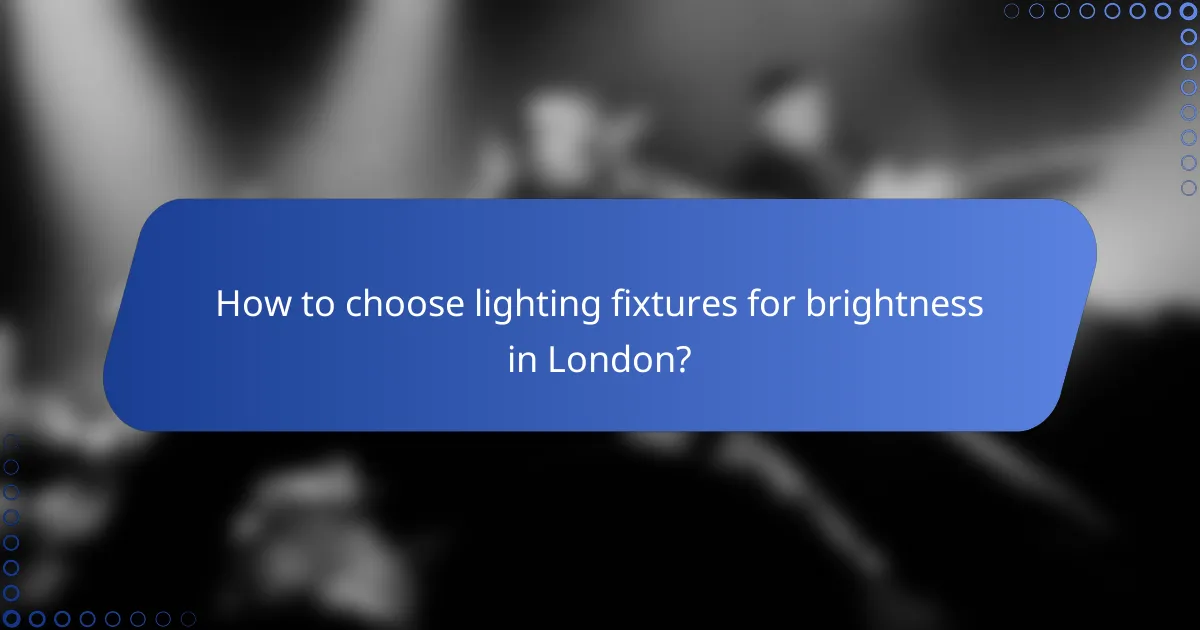
How to choose lighting fixtures for brightness in London?
When selecting lighting fixtures for brightness in London, consider the lumen output, fixture style, and the mood you want to create. Prioritize LED options for high brightness and energy efficiency, while also ensuring the fixtures complement your interior design.
LED fixtures for high lumen output
LED fixtures are ideal for achieving high lumen output, making them perfect for brightening spaces. They typically provide between 80 to 100 lumens per watt, which means you can illuminate larger areas with fewer fixtures.
When choosing LED fixtures, look for products labeled with a high lumen rating, especially if you need to light up a room like a kitchen or living area. Consider adjustable fixtures or dimmable options to control brightness based on your needs.
Fluorescent options for energy efficiency
Fluorescent lighting is another energy-efficient choice, often used in commercial settings but also suitable for home use. These fixtures can produce about 35 to 100 lumens per watt, making them a cost-effective option for general lighting.
When selecting fluorescent fixtures, consider the color temperature, as it affects the mood of the space. Cooler temperatures (around 4000K to 5000K) are suitable for workspaces, while warmer options (around 2700K to 3000K) create a cozy atmosphere in living areas.
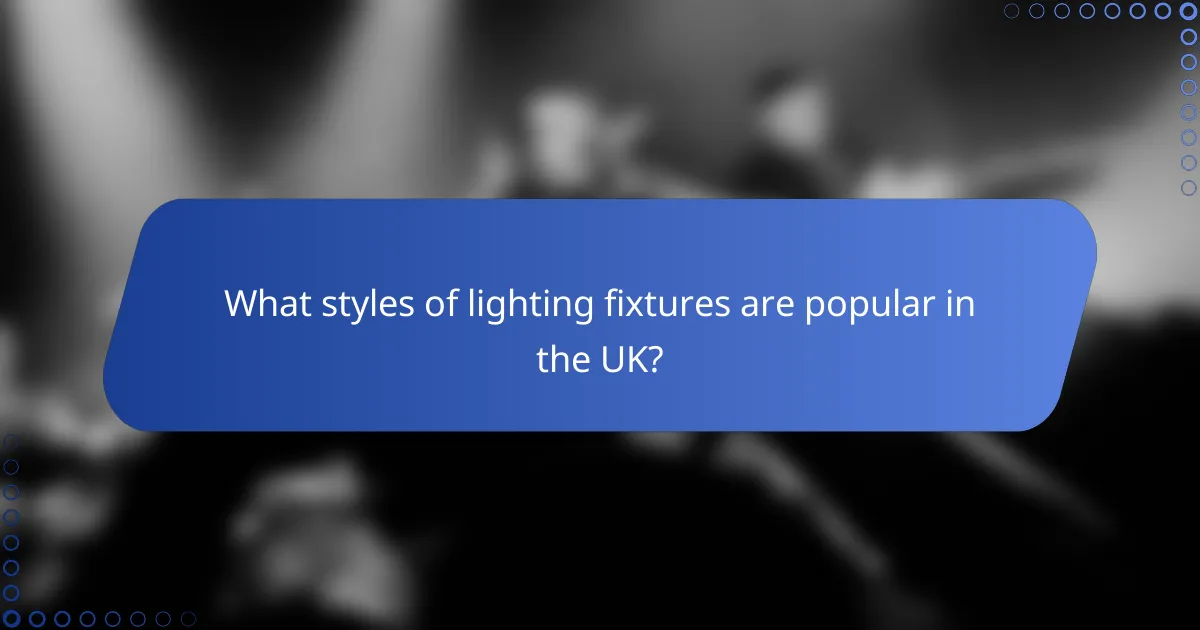
What styles of lighting fixtures are popular in the UK?
In the UK, popular lighting fixture styles include modern minimalist designs and vintage industrial styles. Each of these styles offers unique aesthetics and functionality, catering to various tastes and interior themes.
Modern minimalist designs
Modern minimalist lighting fixtures emphasize simplicity and clean lines, often featuring materials like metal and glass. These designs typically use neutral colors and unobtrusive shapes, making them ideal for contemporary spaces.
When selecting modern minimalist fixtures, consider the size of the room and the amount of light needed. Fixtures should complement the overall decor without overwhelming the space. For instance, pendant lights with sleek profiles can enhance kitchen islands or dining areas.
Vintage industrial styles
Vintage industrial lighting fixtures draw inspiration from old factories and warehouses, characterized by raw materials and a rugged aesthetic. Common elements include exposed bulbs, metal finishes, and Edison-style lamps, creating a nostalgic yet stylish atmosphere.
To incorporate vintage industrial fixtures, look for options that blend well with reclaimed wood or brick elements. These fixtures work well in loft-style apartments or homes with an eclectic decor. Be mindful of the overall lighting balance to ensure the space remains inviting rather than overly dark.
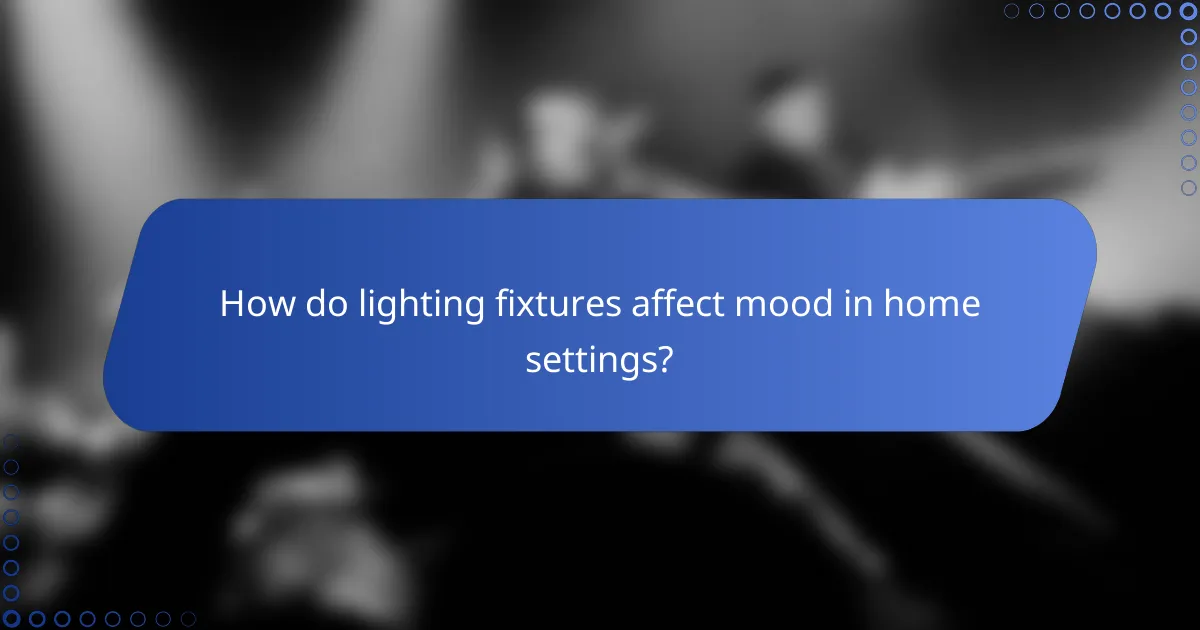
How do lighting fixtures affect mood in home settings?
Lighting fixtures play a crucial role in shaping the mood of a home environment by influencing how spaces are perceived and experienced. The color temperature and brightness of the light can create feelings of warmth, relaxation, or energy, depending on the intended atmosphere.
Warm white for cozy atmospheres
Warm white lighting, typically ranging from 2700K to 3000K, is ideal for creating inviting and comfortable spaces. This type of lighting mimics the glow of traditional incandescent bulbs, which can enhance feelings of relaxation and intimacy.
In living rooms and bedrooms, warm white fixtures can help foster a cozy atmosphere, making them perfect for unwinding after a long day. Consider using dimmable warm white bulbs to adjust brightness levels according to the time of day or activity.
Cool white for energizing spaces
Cool white lighting, generally between 4000K and 5000K, is effective in energizing spaces and promoting alertness. This type of lighting is often used in kitchens, offices, and workspaces where clarity and focus are essential.
When selecting cool white fixtures, look for options that provide adequate brightness without being harsh. LED lights are a popular choice, as they offer energy efficiency and long lifespan while maintaining a crisp, clean light that can enhance productivity.

What are the best brands for lighting fixtures in the UK?
Some of the best brands for lighting fixtures in the UK include Philips and John Lewis, known for their innovative designs and quality. These brands cater to various needs, from smart lighting solutions to stylish home fixtures.
Philips for smart lighting solutions
Philips is a leading brand in smart lighting, offering products that integrate seamlessly with home automation systems. Their Hue range allows users to control brightness and color through mobile apps or voice commands, enhancing both convenience and ambiance.
When considering Philips smart lights, look for features like compatibility with platforms such as Amazon Alexa or Google Assistant. Prices for Philips smart bulbs typically range from £15 to £50, depending on the functionality and design.
John Lewis for stylish home fixtures
John Lewis provides a wide selection of stylish lighting fixtures that blend aesthetics with functionality. Their collection includes everything from contemporary pendant lights to classic table lamps, catering to various interior styles.
When shopping at John Lewis, consider the overall décor of your space. Prices for lighting fixtures can vary significantly, often starting around £30 and going up to several hundred pounds for designer pieces. Look for seasonal sales to find good deals on high-quality items.
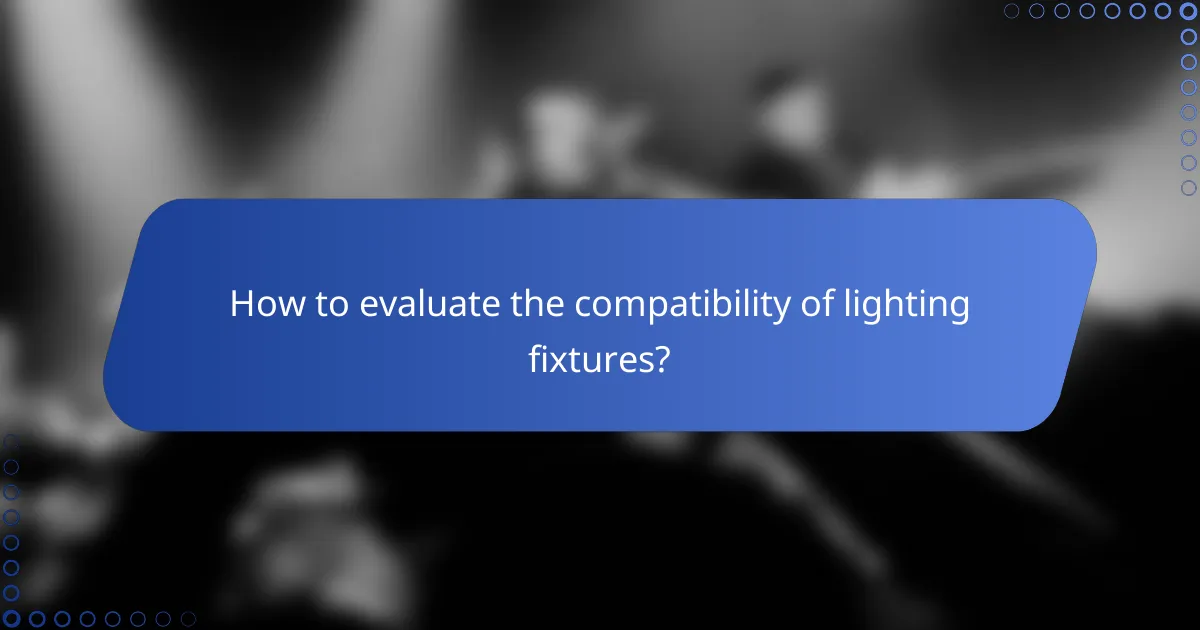
How to evaluate the compatibility of lighting fixtures?
To evaluate the compatibility of lighting fixtures, consider their wattage and voltage ratings, as well as the size of the fixture in relation to the room dimensions. These factors ensure that the lighting meets both functional and aesthetic needs without overwhelming the space.
Check wattage and voltage ratings
Wattage indicates the energy consumption of a lighting fixture, while voltage ratings ensure compatibility with your electrical system. For standard residential use in the U.S., fixtures typically operate at 120 volts, while in Europe, the standard is often 230 volts.
When selecting bulbs, aim for a wattage that provides adequate brightness without exceeding the fixture’s maximum rating. For example, a fixture rated for 60 watts should not use a bulb exceeding that wattage to avoid overheating and potential fire hazards.
Consider fixture size and room dimensions
The size of a lighting fixture should be proportionate to the room it occupies. A small fixture in a large room may appear lost, while an oversized fixture can overwhelm a small space. A good rule of thumb is to add the room’s dimensions in feet and use that sum to determine the fixture’s diameter in inches.
For instance, if a room measures 10 feet by 12 feet, a fixture with a diameter of around 22 inches would be appropriate. Additionally, consider the height of the ceiling; taller ceilings may require fixtures that hang lower or are larger in scale to maintain visual balance.
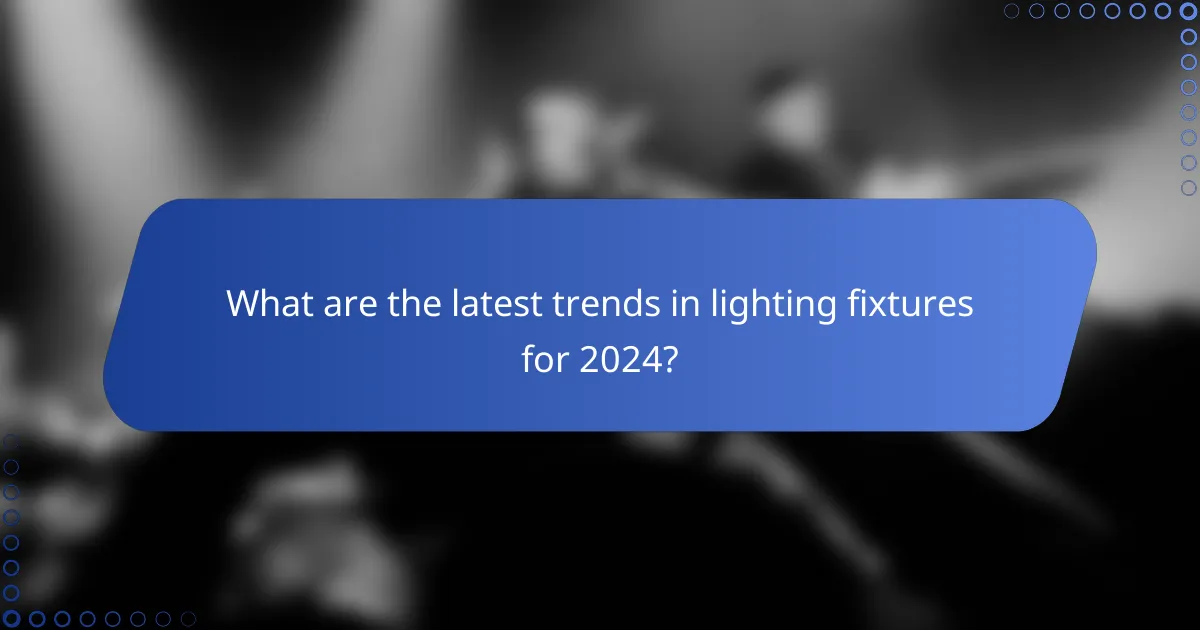
What are the latest trends in lighting fixtures for 2024?
The latest trends in lighting fixtures for 2024 emphasize smart technology, sustainability, and personalized aesthetics. Homeowners are increasingly looking for fixtures that not only enhance their space but also integrate seamlessly with modern technology and eco-friendly practices.
Smart home integration
Smart home integration is a significant trend in lighting fixtures for 2024, allowing users to control their lights remotely through smartphones or voice-activated devices. This technology enables features like dimming, color changes, and scheduling, enhancing convenience and energy efficiency.
When selecting smart lighting, consider compatibility with existing home automation systems, such as Google Home or Amazon Alexa. Look for fixtures that offer user-friendly apps and robust security features to protect your network.
Sustainable materials and designs
Sustainable materials and designs are becoming essential in the lighting industry, with a focus on eco-friendly options that minimize environmental impact. Fixtures made from recycled metals, bamboo, and energy-efficient LEDs are gaining popularity, appealing to environmentally conscious consumers.
To choose sustainable lighting, look for certifications like Energy Star or products that use low-impact manufacturing processes. Investing in durable, timeless designs can also reduce waste by ensuring longevity and reducing the need for frequent replacements.
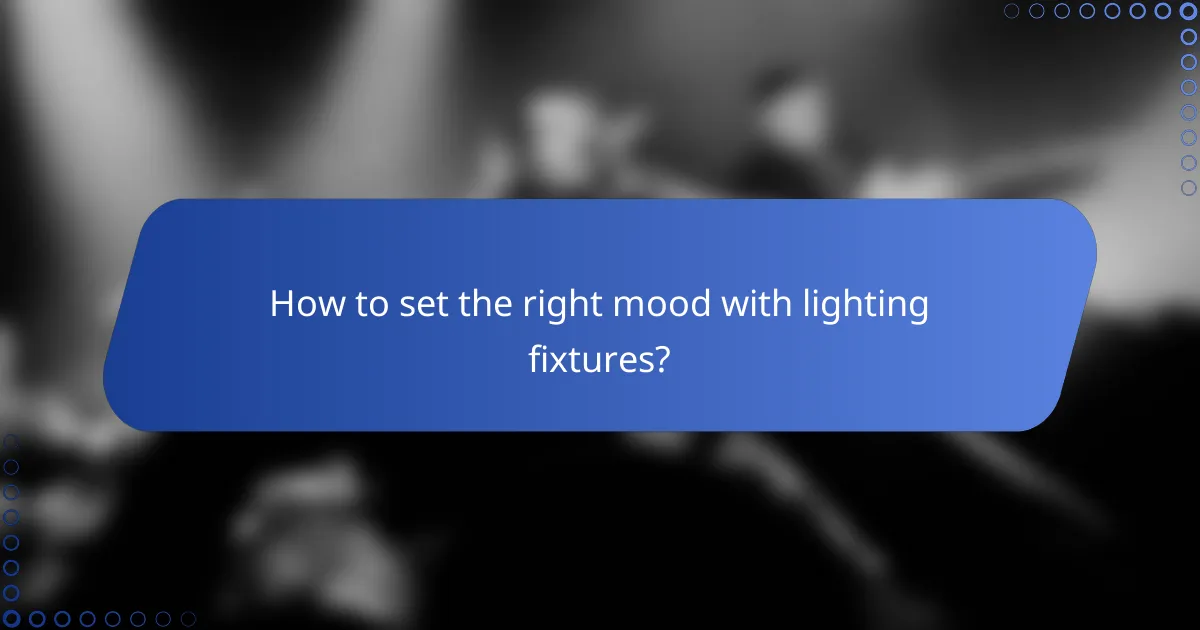
How to set the right mood with lighting fixtures?
Setting the right mood with lighting fixtures involves choosing the appropriate brightness, style, and placement to create the desired atmosphere in a space. Consider how different lighting types can influence emotions and functionality, allowing you to tailor the environment to your needs.
Layered lighting techniques
Layered lighting combines ambient, task, and accent lighting to enhance the overall mood of a room. Ambient lighting provides general illumination, task lighting focuses on specific areas for activities like reading or cooking, and accent lighting highlights features or decor.
To effectively use layered lighting, start with a central overhead fixture for ambient light, then add table lamps or under-cabinet lights for tasks, and finish with wall sconces or spotlights for accents. This approach allows for flexibility and can transform a space from functional to inviting.
Dimmer switches for adjustable ambiance
Dimmer switches are essential for creating adjustable ambiance in any room. They allow you to control the brightness of your lighting fixtures, enabling you to set the mood for various activities, from lively gatherings to quiet evenings.
When installing dimmer switches, ensure they are compatible with your light bulbs, as some types may require specific dimmers. A good rule of thumb is to use dimmers with LED bulbs rated for dimming to avoid flickering. This simple addition can greatly enhance your lighting experience, making it easy to adapt the atmosphere as needed.
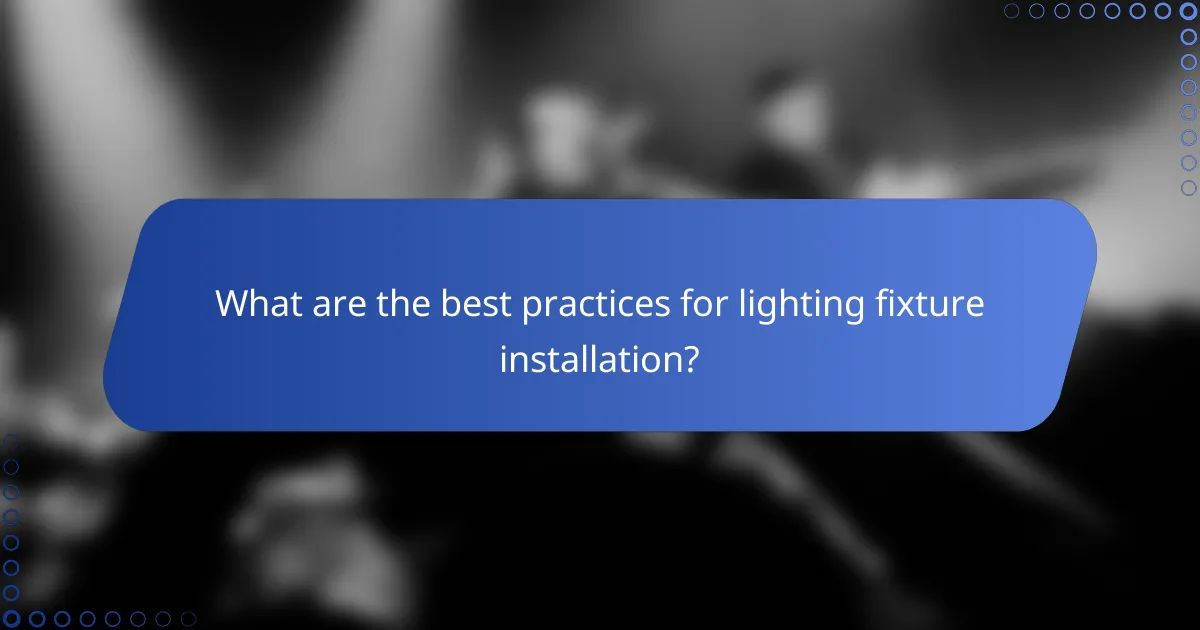
What are the best practices for lighting fixture installation?
To ensure optimal lighting fixture installation, prioritize safety, functionality, and aesthetics. Proper installation involves adhering to electrical codes, selecting the right fixtures for the space, and considering the overall design of the room.
Hire a qualified electrician
Engaging a qualified electrician is crucial for safe and compliant lighting fixture installation. They possess the necessary training and experience to handle electrical systems, ensuring that all work meets local codes and regulations.
When hiring an electrician, verify their credentials and experience with similar projects. Request references and check reviews to ensure they have a solid reputation. A skilled electrician can also provide valuable insights on fixture selection and placement for optimal lighting.
Be prepared to discuss your lighting goals and any specific requirements you have. This will help the electrician recommend the best solutions tailored to your needs, whether for residential or commercial spaces.
